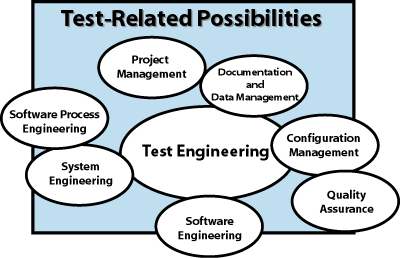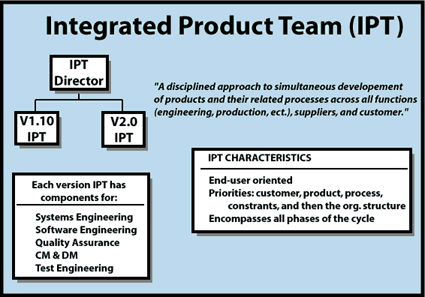
Test-Related Responsibilities This section contains descriptions of the functional organization and roles required supporting the software test related responsibilities. The focus of the described organization is the efficient testing and development of quality software products. The responsibilities described may be combined or expanded based on the size or nature of a given project. The general software development project organization is shown in Figure 1. Specific responsibilities in the software test process are as follows: 

Sample Reporting Chain Figure 2 shows an example of a software testing process reporting chain. Test Engineering is similar but independent of the Software Engineering reporting chain. The figure uses the team titles presented in Figure 1. This reporting structure is compliant with the Carnegie-Mellon Maturity Model (CMM) Software Engineering Institute's Level 3 model dated August 1991. 
Integrated Product Team (IPT) Figure 3 presents a disciplined approach to simultaneous development of products and their related processes across all functions such as engineering, production, testing, suppliers and the customer. The integrated product team promotes concurrent engineering practices, builds teamwork and a wide-based understanding of the software engineering process from requirements definition to customer acceptance. The integrated product team characteristics are: End-user oriented; Establishes Priorities (customer, product, process, constraints, and then the organization structure); Encompasses all phases of the life cycle. Note: Please click Quiz on your left navigation and take Quiz 1.
|
